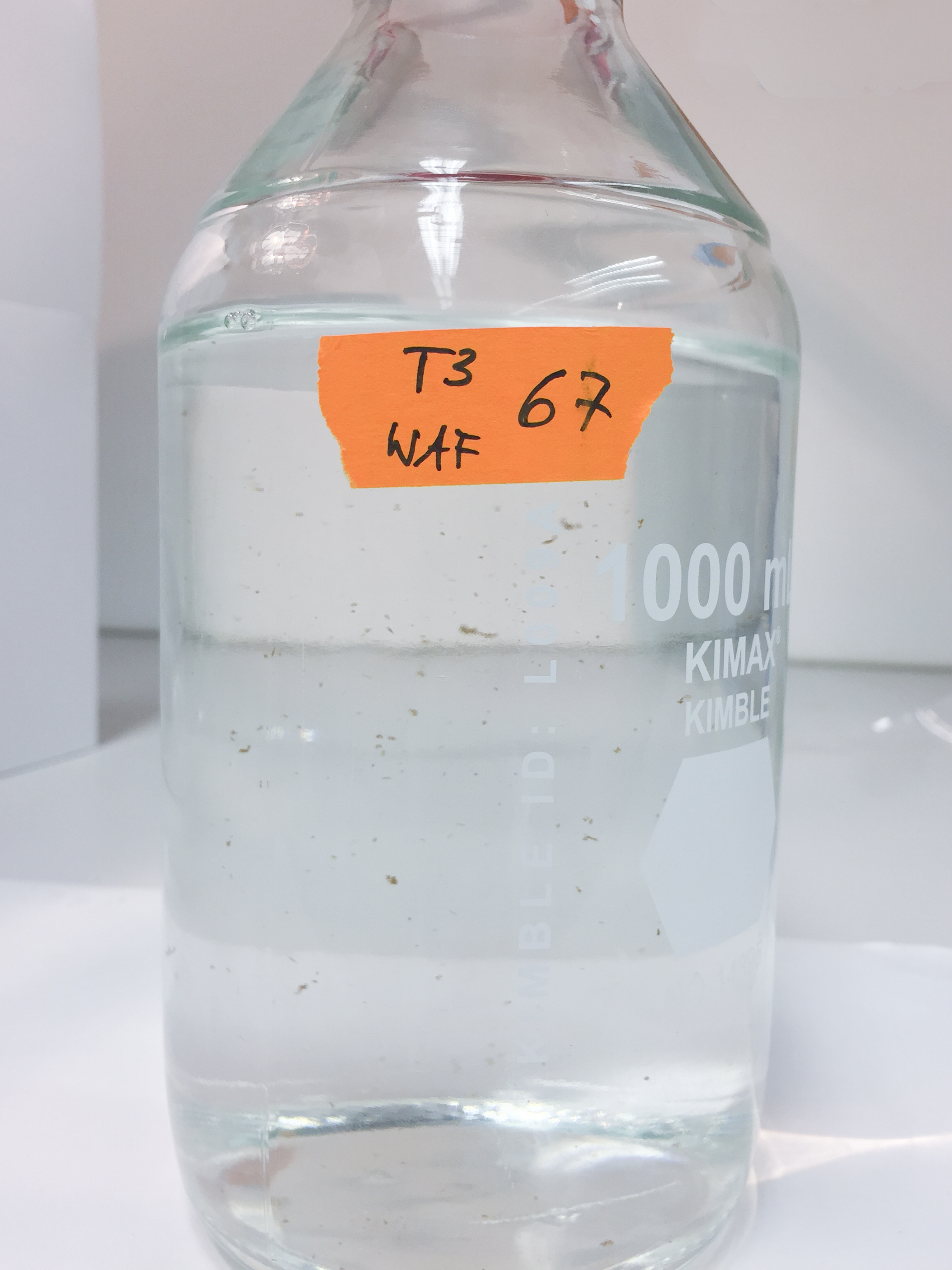Main navigation
Combating oil spills - biosurfactants can stimulate microbial oil degradation
Oil spills from drilling platforms and tankers cause environmental pollution and a loss of biodiversity. Researchers at the University of Stuttgart, among others, are now using biosurfactants to improve the management of oil spills: their latest research shows that biosurfactants lead to better microbiological degradation of oil components in seawater compared to conventional dispersants.
Oil on the ocean surface, contaminated coasts, oil-covered fish and birds - oil spills have devastating environmental consequences for plants, animals and humans. Crude oil is toxic. In addition to sulphur, nitrogen and heavy metals, it also contains polycyclic aromatic hydrocarbons that are carcinogenic. Plants die, animals drown, starve or are poisoned, pollutants enter the food chain.
An estimated 1,500 million litres of oil are spilled into the oceans every year
The major oil spills of the past, such as the Exxon Valdez tanker disaster or the Deepwater Horizon drilling rig explosion in the Gulf of Mexico are still having an impact today. These disasters have been followed by many others, including, most recently, the explosions at an oilfield in Western Siberia, and the tanker accidents off the Dutch and Peruvian coasts, which led to a state of emergency being declared. An estimated 1,500 million litres of oil are spilled into the world’s oceans every year. This makes it all the more important, especially in the case of major incidents, to contain the pollution quickly, efficiently and in a way that is compatible with nature.
Chemical dispersants are not a panacea

Until now, chemical dispersants have routinely been used for oil spills, in quantities of up to several million litres, depending on the amount of oil involved. This dissolves the clumps of oil and spreads them more evenly over the sea. The intention is to speed up microbial oil degradation, as bacteria living in the sea feed on crude oil components and can convert them into harmless substances more quickly if the oil-water interface is larger.
However, the standard method is controversial. The impact of dispersants with regard to potential effects on microorganisms, for example, has not yet been sufficiently investigated. A study published in 20151) suggests that the use of dispersants should be critically evaluated. For example, the dispersants are not always beneficial to oil-degrading microorganisms and can even inhibit their activities. "We were able to show that chemical dispersants in deep-sea water from the Gulf of Mexico can slow down microbial oil degradation," says Prof. Dr. Sara Kleindienst, a professor of environmental microbiology at the University of Stuttgart who was involved in the study together with other researchers from the USA. At the time the study was carried out, Kleindienst was working both in the USA and at the University of Tübingen.
"Interestingly, our experiments with seawater from the Gulf showed that some oil-utilising bacterial genera such as Marinobacter were able to multiply better in the absence of dispersants than in their presence. Since then, the topic has been discussed from many different angles, and the question of how to combat oil spills in the most effective and environmentally friendly way remains open."
The environmental microbiologist wants to continue to work on closing the research gap. Together with an interdisciplinary team of researchers from the University of Tübingen, China West Normal University and the University of Georgia, she has investigated the potential of biosurfactants as an alternative to chemical dispersants using seawater from the North Sea.
Microorganisms as biosurfactant factories
Biosurfactants, as the name suggests, work in a similar way to chemical surfactants, i.e. substances that reduce the interfacial tension between two phases and ensure better distribution. However, they have one major advantage: they are of natural origin because they are formed by the bacteria themselves. "It has been known for some time that microorganisms produce biosurfactants," Kleindienst explains. "They have also been suggested as a possible alternative to chemical dispersants."
The Stuttgart scientist and her team have now taken research in this field further by simulating an oil spill in the laboratory to compare the effect of biosurfactants and chemical dispersants. To do this, the team took seawater from the North Sea and transported it to the lab under refrigeration to prevent the microbial population from changing too much.
Message in a bottle: oil pollution scenarios made transparent

Up to 100 microcosms in 1-litre bottles mimic oil pollution scenarios over time, as Kleindienst explains: "We treated the seawater with either the biosurfactant rhamnolipid or one of two dispersants - Corexit 9500 or Slickgone NS - in each case in the presence and absence of oil. We used radioactively labelled substances to enable us to follow the degradation of the oil by the microorganisms in detail." This method yielded exciting new results: "Our studies with radiolabelled hydrocarbons or a radiolabelled amino acid showed that the highest microbial rates of hydrocarbon oxidation and protein biosynthesis occurred in the samples treated with rhamnolipid."
But it's not just about activities alone, as Kleindienst explains: "We found that the microbiological communities in the microcosms with chemical surfactants were very different from those with biosurfactants. This is an indication that biosurfactants, unlike chemical dispersants, can stimulate other oil-degrading bacteria - both in terms of growth and activities." Overall, the international team's findings suggest a promising application of biosurfactants in future marine oil spills. This opens up new potential for further research and interdisciplinary collaboration to move closer to the goal of limiting environmental damage after accidents.
Further research, support and networking - for future oil spill preparedness
The experiment and the important results have recently been published in a renowned scientific journal2). The next step would be to upscale the experiment, i.e. to carry it out systematically under controlled conditions on a larger scale. Kleindienst talks about the research group's vision going forward: "What we would like to do is to develop products based on biosurfactants that can provide an effective and environmentally friendly response to oil spills."
It is a promising goal that deserves recognition and broad support, as comprehensive ecosystem analyses clearly take time and cost money. "It is very expensive to produce biosurfactants and also difficult to implement biotechnologically," says Kleindienst. "Partnerships with other institutions that specialise in producing biosurfactants in large quantities in the bioreactor would be extremely useful." This is an exciting and crucial reference point because, in addition to climate and nature protection, precautionary measures must be given the highest priority in the event of an emergency.
The combination of application-oriented topics and basic research is very important to the environmental microbiologist: "We want to find out how certain processes work, but that’s not all. Ultimately, we also want our research to contribute to fully exploiting the potential for innovation in applied research and technological development." The group is currently starting research as part of an ERC-funded project to understand the effects of surfactants from glyphosate products on microorganisms and the environment.
Literature:
1) S. Kleindienst et al. (2015): Using dispersants following oil spills: impacts on the composition and activity of microbial communities. Nature Reviews Microbiology, 13: 388-396
2) Lu Lu et al. (2023): Rhamnolipid biosurfactants enhance microbial oil biodegradation in surface seawater from the North Sea. ACS Environmental Science & Technology Water, 19. Juli 2023.